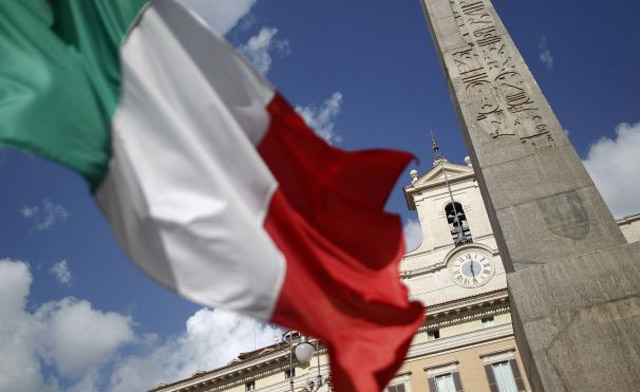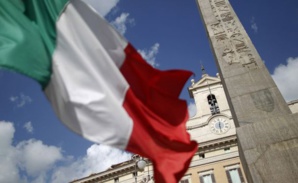According to the forecasts for the full year, it will increase by 0.7%, stimulated by the weak euro, cheap oil, the ECB's quantitative easing program and the reformist government. It looks pretty good compared to the recent past: from 2001 to 2013, Italy's GDP contracted by 0.2%.
Nationwide statistics always hides regional differences. In Italy, these differences are particularly large. The country, in fact, has two economies. Take, for example, the recession years 2001-2013. At that time, the northern and central part of Italy grew by almost 2%. At the same time, the economy of the South was reduced to 7%.
This is partly explained by the fact that the south’s growth rate was slower than of the north before the financial crisis. But the main reason for the divergence in appalling indicators of the south: its economy shrank twice as fast than in the north from 2008 to 2013 - by 13% compared with 7%.
The south of Italy (or mezzogiorno), which includes eight provinces, as well as the island of Sardinia and Sicily, is suffering from economic decline in seven years. Thus, now Italy's economy is strong and weak at the time - it all depends on what part of the country you are considering.
From 943 thousand italians who became unemployed from 2007 to 2014, 70% are Southerners. The total number of employed people in Italy declined by 4% over this period; in the south, the same figure is 10.7%. Employment in the south is lower than in any other country of the European Union: 40%; In the north it is 64%.
The lower birthrate and the increasing migration to the north or abroad only aggravate the negative situation in the south. From 2001 to 2013, more than 700 thousand of southerners, 70% of which are aged 15 to 34 years, and a quarter of a university degree, left their native cities.
According to Marco Zigon from Getra, a producer of electrical transformers, today in Naples it is extremely difficult to find qualified engineers, few people want to move here from other parts of the country. It is expected that in the next 50 years, the South loses 4.2 million people, or one fifth of the total population.
The negative demographic trend is widening the gap with the north on such an important indicator as GDP per capita, according to SVIMEZ, the association for the development of the south. But the loss of human capital, together with low investment in tangible objects deplete much needed resources for the reconstruction of the region. Investments in the north fell by a quarter between 2008 and 2013; in the south during the same period, they fell to the third.
All these problems are not new and exclusively for the South, but they are more dangerous than economic difficulties, slowing the growth of the north of Italy.
The crumbling infrastructure is a good example. Zigon complains about the sad state of the port of Naples, which is quite strongly inhibits Getra’s export. In April, part of the main road through Sicily was destroyed by the mud flow, resulting in the now need to spend twice as much time to cross the island from one side to the other. Repair of the road would likely take several years.
A significant part of Italy lags behind Europe in such important categories as digital infrastructure, and especially in the south. The same can be said of the civil proceedings and the bureaucracy, each of which operates much more slowly in the southern part of the country. Corruption - the usual thing in the north, indicates Antonio La Spina at the University Louis in Rome, but it is much bigger in the south, although the amount of bribes there is somewhat less. All this, of course, complicates the life of the business.
Increasing exports and cheap loans helped revive the economy of Italy in the last few months. But it did not affect the south. The region accounts for only a tenth of the total Italian exports in the year (400 billion euros), much of which goes to Europe. While exports to the North grew by 2.9% last year, in the south it fell by 4.7%.
Regional differences is a common thing for many countries, says economic historian Louis University Gianni Toniolo, but in Italy they are special because of its duration. Differences between East and West Germany were much greater than that between northern and southern Italy in the 1990s; today the gap is much smaller. If Italy's economy has evolved as fast as the German, it would have found a way to reduce internal differences.
Nationwide statistics always hides regional differences. In Italy, these differences are particularly large. The country, in fact, has two economies. Take, for example, the recession years 2001-2013. At that time, the northern and central part of Italy grew by almost 2%. At the same time, the economy of the South was reduced to 7%.
This is partly explained by the fact that the south’s growth rate was slower than of the north before the financial crisis. But the main reason for the divergence in appalling indicators of the south: its economy shrank twice as fast than in the north from 2008 to 2013 - by 13% compared with 7%.
The south of Italy (or mezzogiorno), which includes eight provinces, as well as the island of Sardinia and Sicily, is suffering from economic decline in seven years. Thus, now Italy's economy is strong and weak at the time - it all depends on what part of the country you are considering.
From 943 thousand italians who became unemployed from 2007 to 2014, 70% are Southerners. The total number of employed people in Italy declined by 4% over this period; in the south, the same figure is 10.7%. Employment in the south is lower than in any other country of the European Union: 40%; In the north it is 64%.
The lower birthrate and the increasing migration to the north or abroad only aggravate the negative situation in the south. From 2001 to 2013, more than 700 thousand of southerners, 70% of which are aged 15 to 34 years, and a quarter of a university degree, left their native cities.
According to Marco Zigon from Getra, a producer of electrical transformers, today in Naples it is extremely difficult to find qualified engineers, few people want to move here from other parts of the country. It is expected that in the next 50 years, the South loses 4.2 million people, or one fifth of the total population.
The negative demographic trend is widening the gap with the north on such an important indicator as GDP per capita, according to SVIMEZ, the association for the development of the south. But the loss of human capital, together with low investment in tangible objects deplete much needed resources for the reconstruction of the region. Investments in the north fell by a quarter between 2008 and 2013; in the south during the same period, they fell to the third.
All these problems are not new and exclusively for the South, but they are more dangerous than economic difficulties, slowing the growth of the north of Italy.
The crumbling infrastructure is a good example. Zigon complains about the sad state of the port of Naples, which is quite strongly inhibits Getra’s export. In April, part of the main road through Sicily was destroyed by the mud flow, resulting in the now need to spend twice as much time to cross the island from one side to the other. Repair of the road would likely take several years.
A significant part of Italy lags behind Europe in such important categories as digital infrastructure, and especially in the south. The same can be said of the civil proceedings and the bureaucracy, each of which operates much more slowly in the southern part of the country. Corruption - the usual thing in the north, indicates Antonio La Spina at the University Louis in Rome, but it is much bigger in the south, although the amount of bribes there is somewhat less. All this, of course, complicates the life of the business.
Increasing exports and cheap loans helped revive the economy of Italy in the last few months. But it did not affect the south. The region accounts for only a tenth of the total Italian exports in the year (400 billion euros), much of which goes to Europe. While exports to the North grew by 2.9% last year, in the south it fell by 4.7%.
Regional differences is a common thing for many countries, says economic historian Louis University Gianni Toniolo, but in Italy they are special because of its duration. Differences between East and West Germany were much greater than that between northern and southern Italy in the 1990s; today the gap is much smaller. If Italy's economy has evolved as fast as the German, it would have found a way to reduce internal differences.






